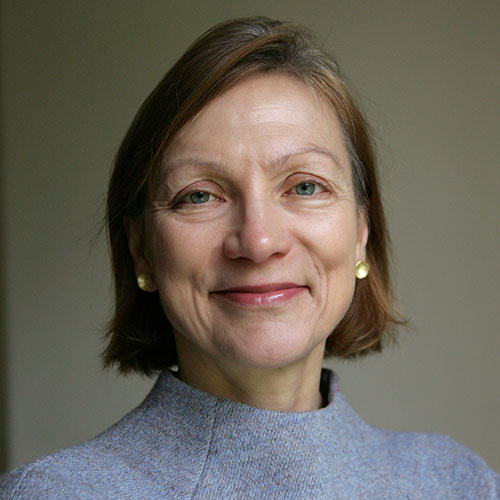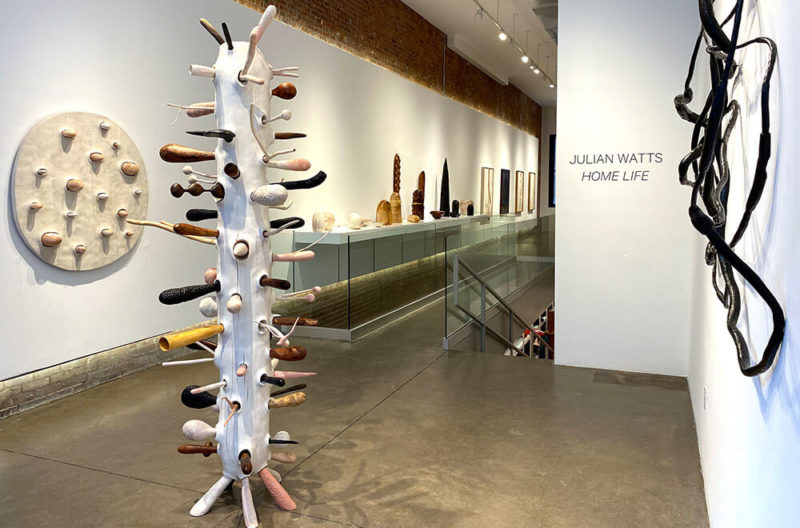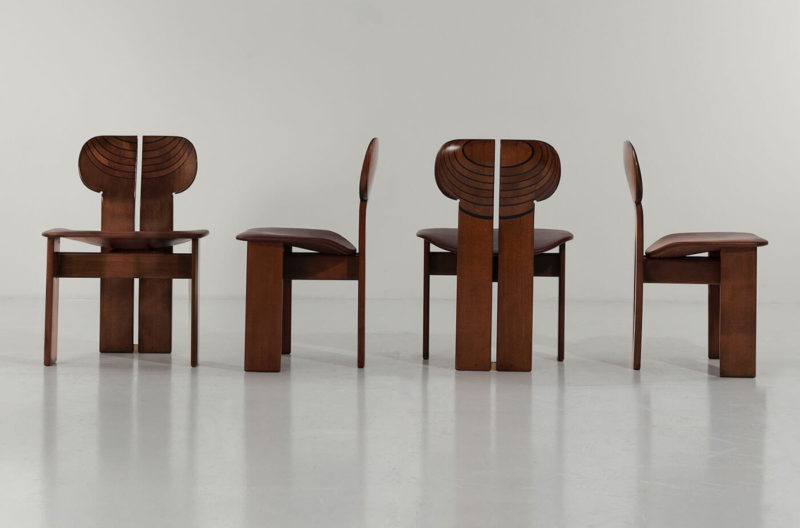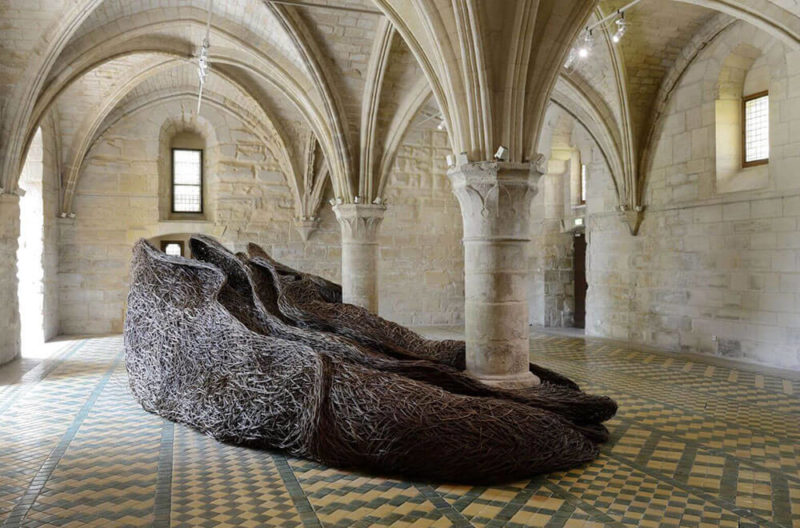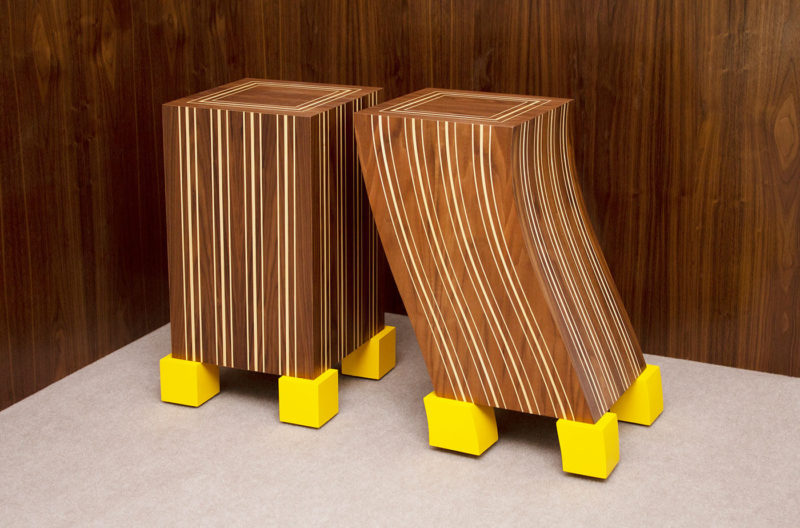Julian Watts – Ash Swale
As his first European solo exhibition opens, the artist maker talks to TDE about moving to the foothills of the Oregon Coast Range and being inspired by Cy Twombly.
Sarah Myerscough Gallery, London
17th June – 17th September 2022
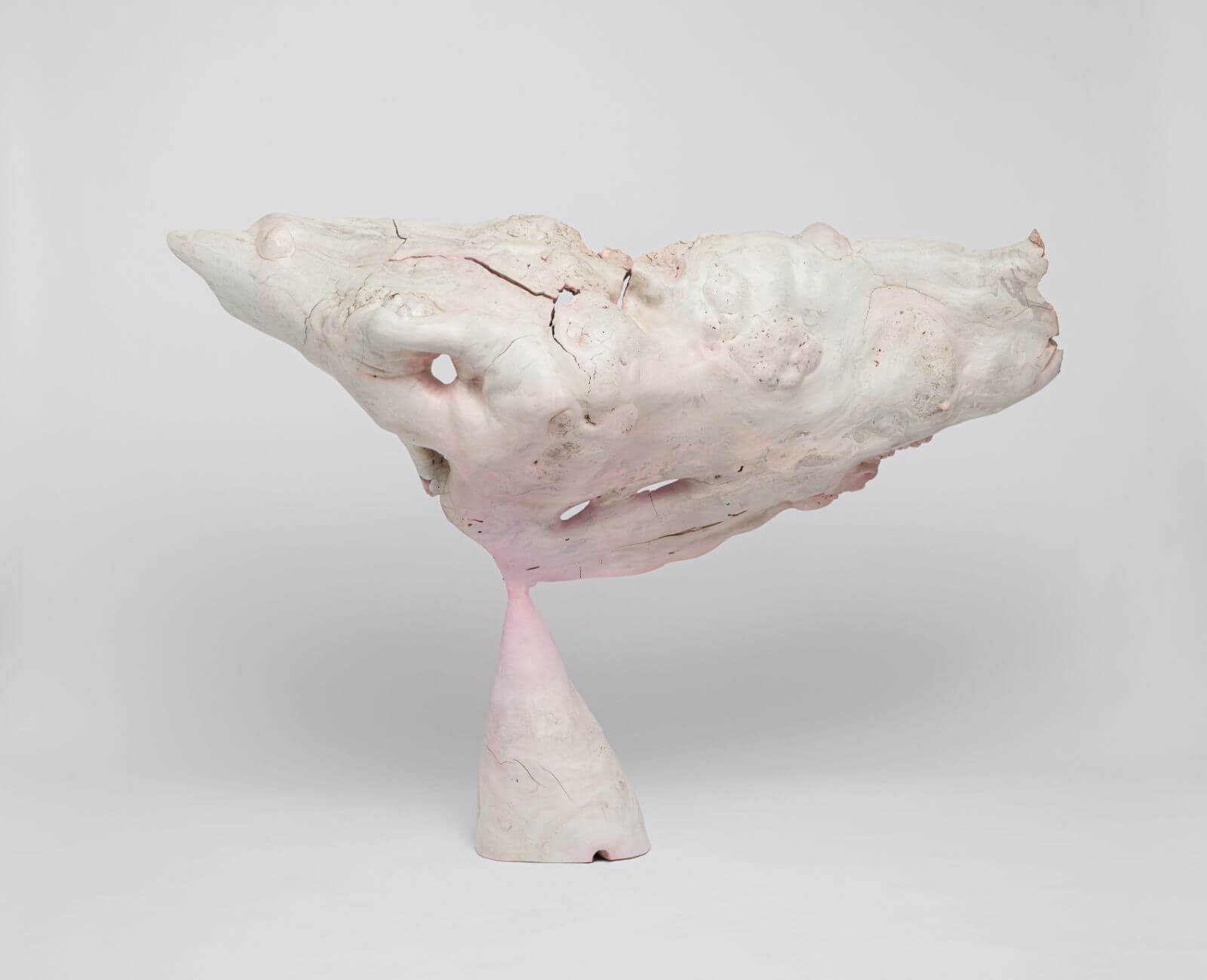
Julian Watts, ‘White Sculpture (triangles)’, 2022
COURTESY: Julian Watts & Sarah Myerscough Gallery
JULIAN WATTS IS a sculptor based in Oregon. Brought up in San Francisco, he trained as a fine artist at the University of Oregon before returning to the Bay Area. There he learned traditional woodworking techniques in furniture making, before starting to create his own distinctive abstract, biomorphic wood carvings, ranging from bowls and furniture, to large scale sculptural pieces.
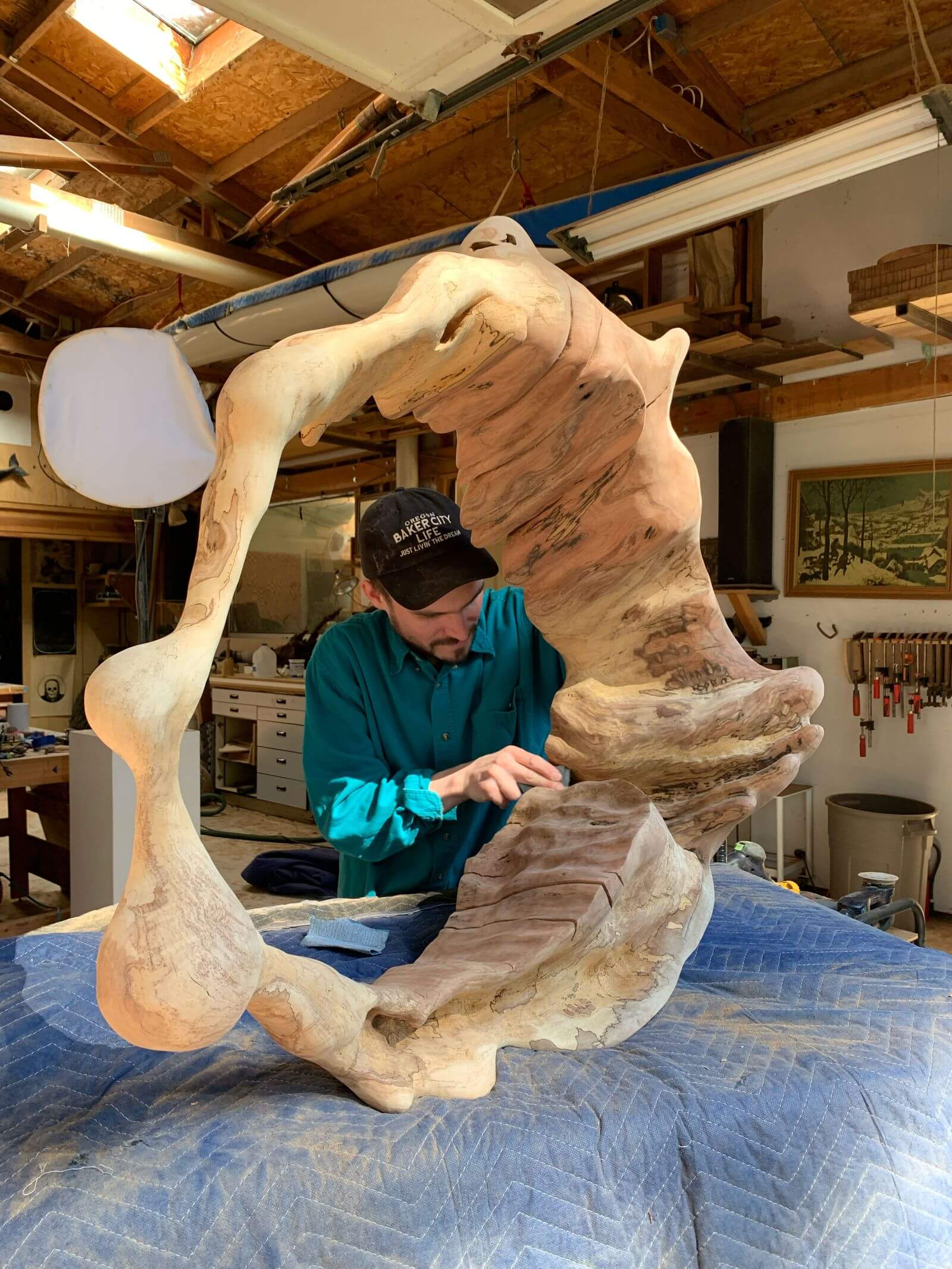
Julian Watts in his studio, 2022
COURTESY: Julian Watts & Sarah Myerscough Gallery
His work has been shown internationally including in solo exhibitions at Patrick Parrish Gallery in New York, Curator’s Cube in Tokyo and Jack Fischer Gallery in San Francisco. He has participated in art and design fairs, such as Design Miami/Basel, FOG and London Design Festival, and has had work exhibited in London’s Design Museum and ICA San José.
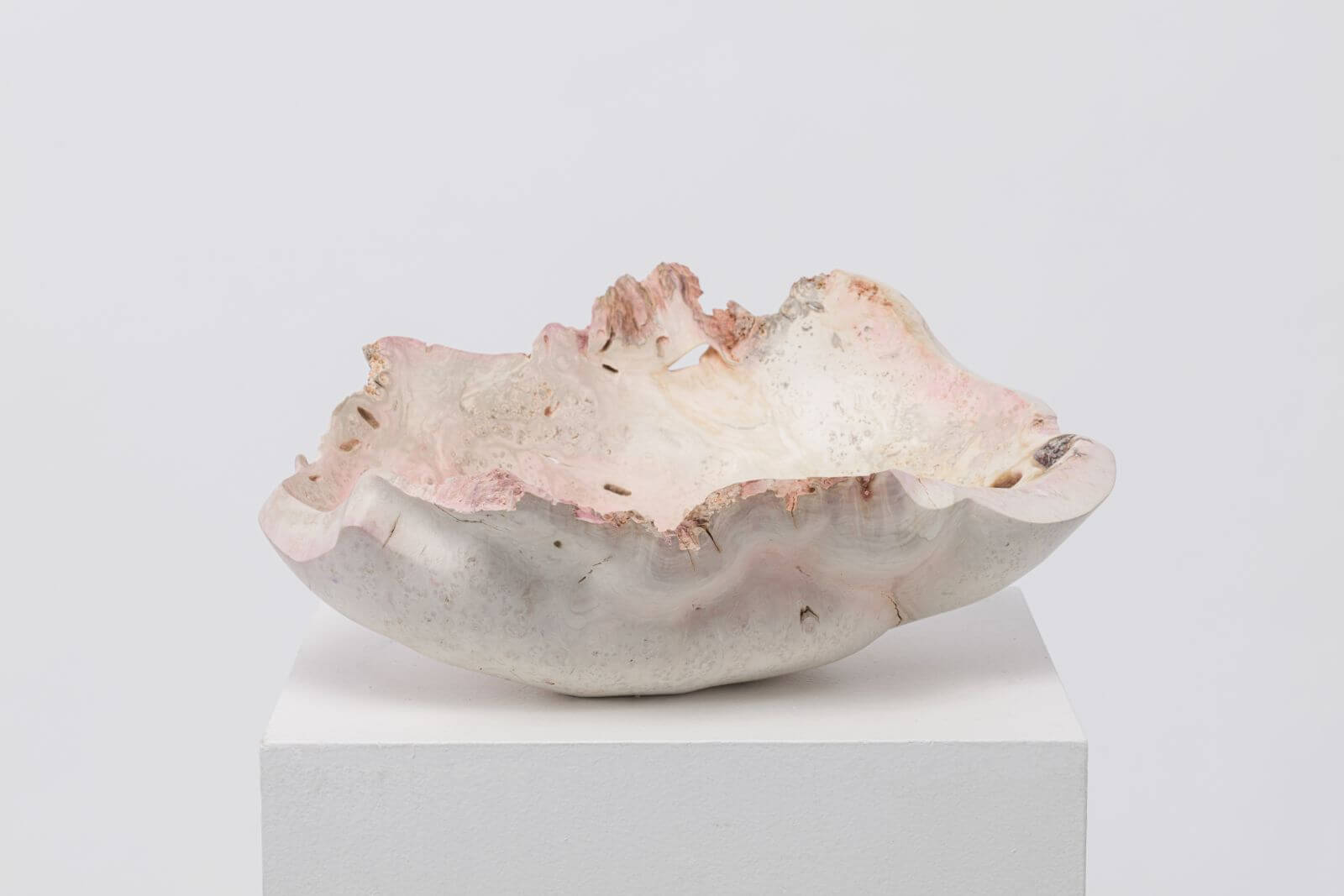
Julian Watts, ‘Bowl’, 2022
COURTESY: Julian Watts & Sarah Myerscough Gallery
On 17th June he opens a new show at Sarah Myerscough Gallery in London, titled ‘Ash Swale’, after the boggy natural habitat near his home in the foothills of the Oregon Coast Range, where he sources his wood. The show explores three aspects of his current practice – carved blackened wall pieces, bleached and tinted carved sculptures and ‘tangle’ sculptures cast in bronze.
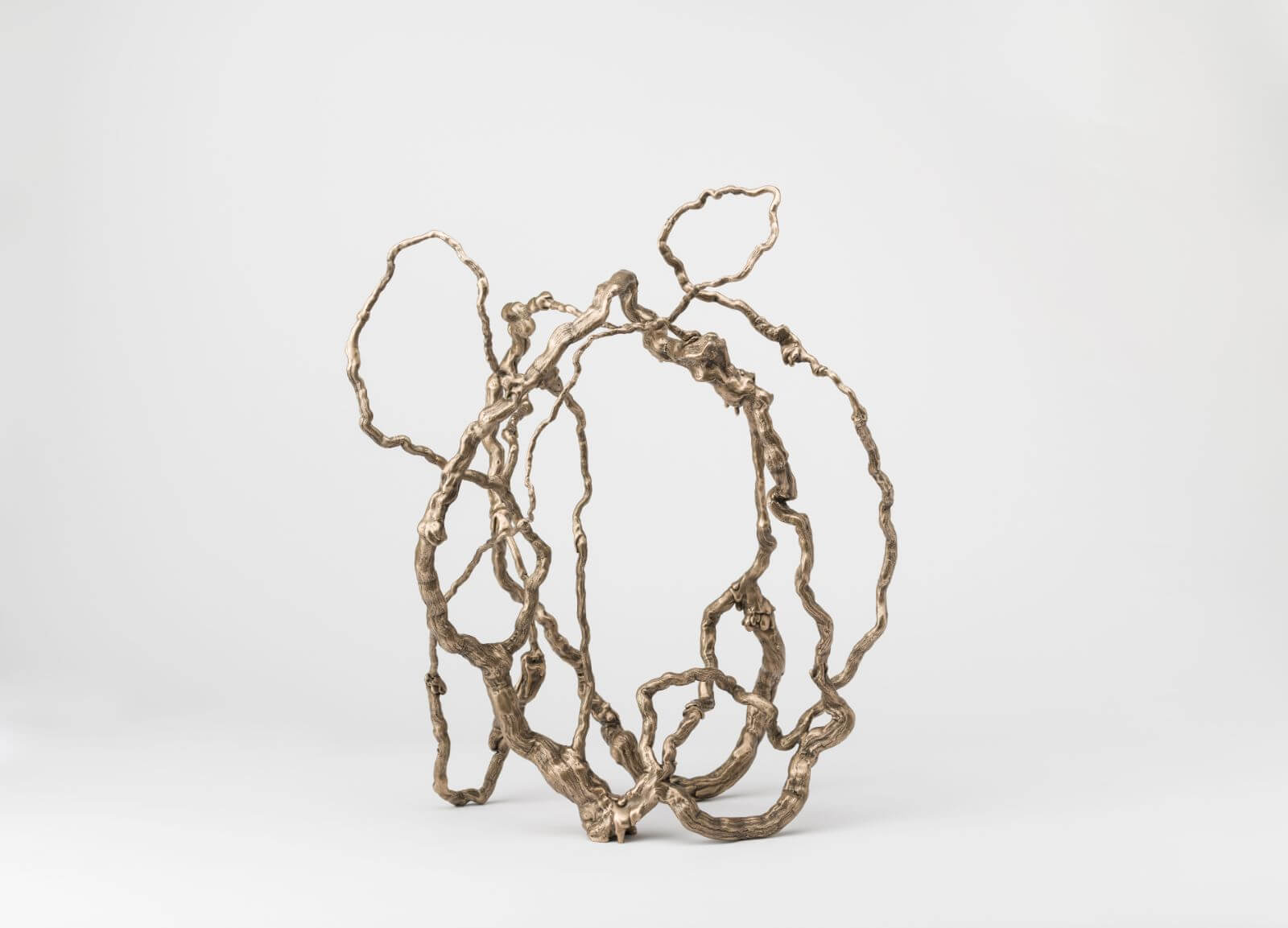
Julian Watts, ‘Tangle (Large)’, 2022
COURTESY: Julian Watts & Sarah Myerscough Gallery
Emma Crichton-Miller (EC-M): Tell us about your new show, ‘Ash Swale’?
Julian Watts: This is the realisation of an idea I have been aiming at since 2020 – to create a record of this natural environment and my relationship with it. It is strikingly different from all my past shows, though still developing some of the themes and ideas from before.
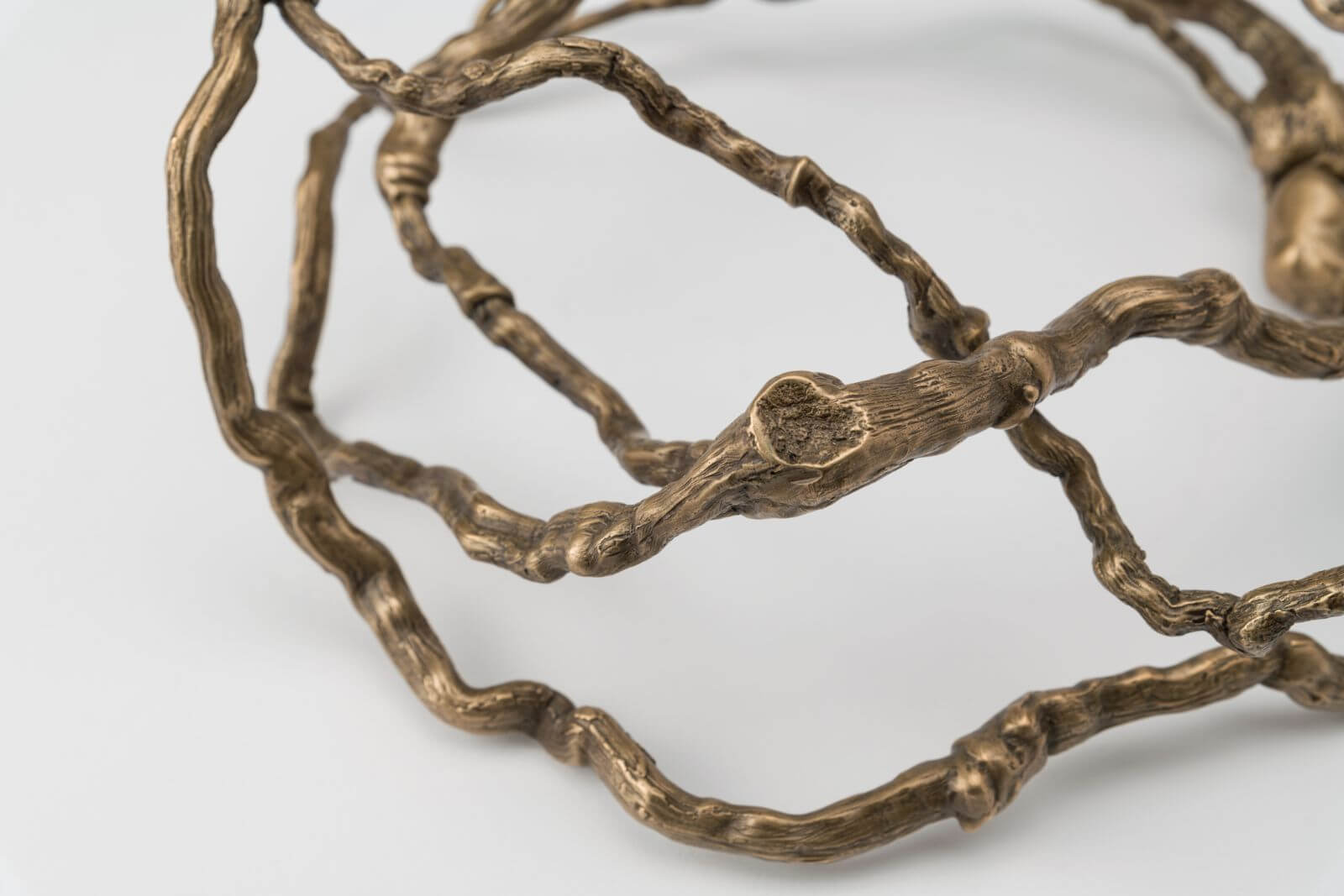
Julian Watts, ‘Tangle,’ (detail), 2022
COURTESY: Julian Watts & Sarah Myerscough Gallery
EC-M: How did that change in thinking occur and what are its consequences?
Julian Watts: The biggest factor was my move to Oregon three years ago – I live in the middle of the forest, totally isolated. When I was living in an urban area, being exposed to woodworking techniques and aesthetics, with my background in fine art, I was determined to avoid any beautiful ashy wood. I would go to the same lumber merchants we would go to when buying wood to make dining tables and buy a block of maple. The idea was for me to transmit the idea I had in my head into this material, without having a fancy piece of wood. But then moving into the forest, I was surrounded by beautiful woods – going to a lumber store and buying a block of wood now, I can’t imagine why I would ever want to do that.
And so now I am only using wood from these sources that I have found myself – anything that has some rot or cracks. I am no longer transmitting an idea on to the material, I am using that piece of wood as the starting point and just following every crack and curve. So the result is totally different – wilder and less the confined thing that I originally thought of.
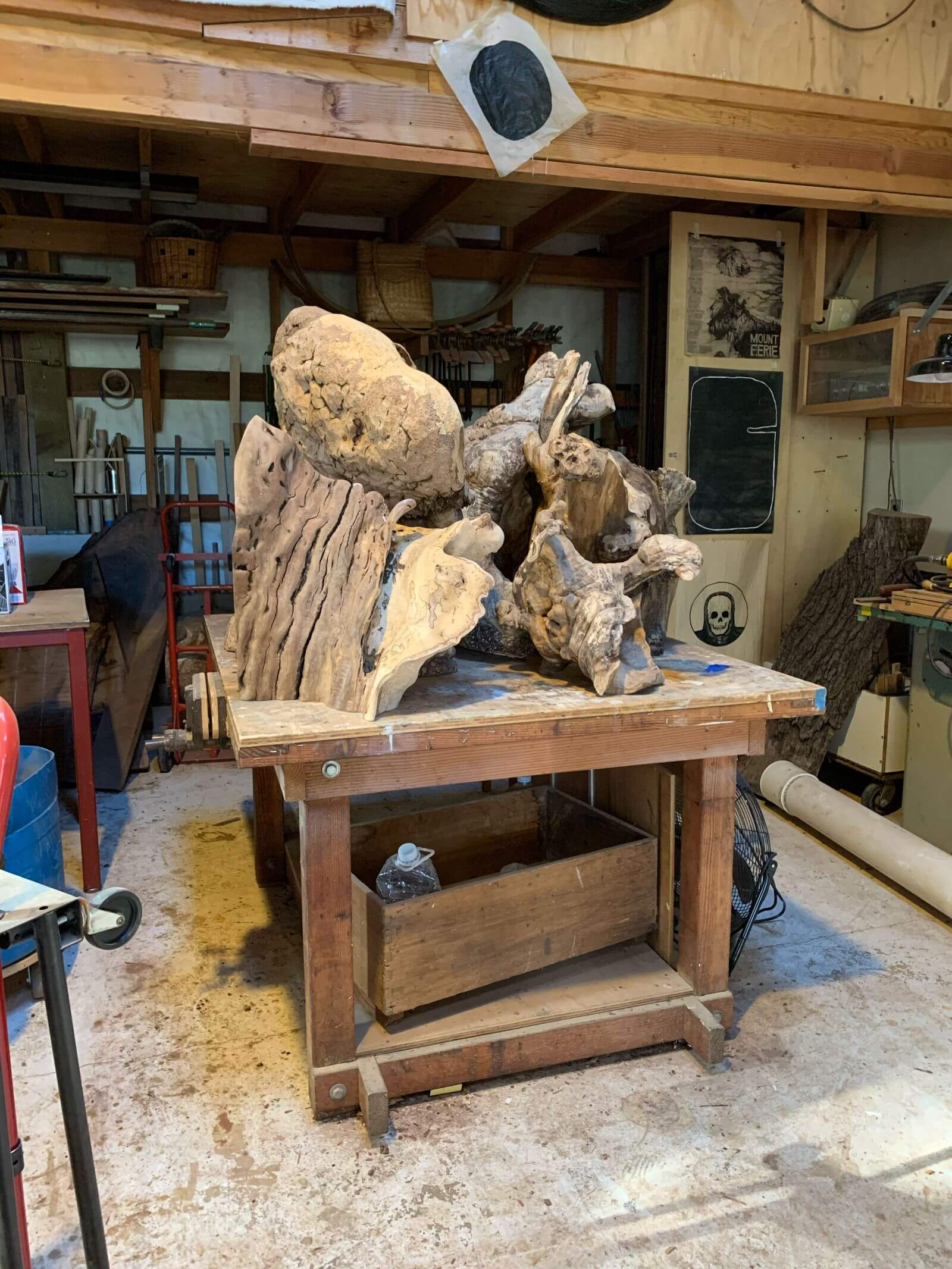
Julian Watts in his studio, 2022
COURTESY: Julian Watts & Sarah Myerscough Gallery
EC-M: Do you see yourself more as an artist, a maker or a designer?
Julian Watts: I have of course felt that question and have been reticent to call myself ‘an artist’. But I cannot really claim to have a design sense, that is not the way my brain works, thinking about function. And even the idea of expertise in craftsmanship has faded in importance for me. It was great coming from really progressive conceptual art school training to traditional woodworking. I am very happy to have this foundation of craft and I feel grounded in materiality, but the way I have thought about it, it’s more about the vision and the idea.
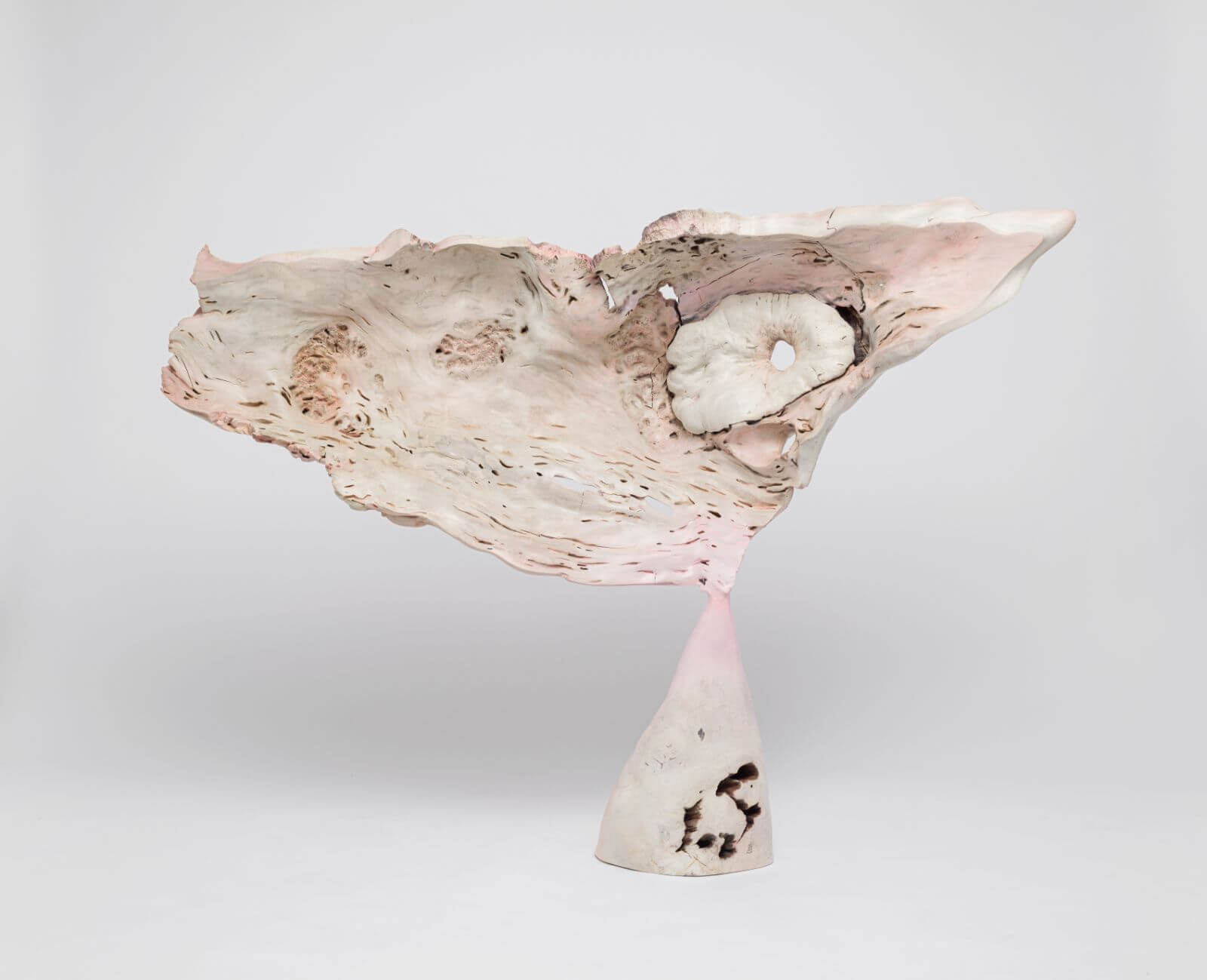
Julian Watts, ‘White Sculpture (triangles)’, 2022
COURTESY: Julian Watts & Sarah Myerscough Gallery
EC-M: Where are you at the moment?
Julian Watts: The property goes down a hill to the bog, which is where the wood comes from – the ash swale. All of the wood for this show is from the same tree. I am constantly sorting through twigs and sticks and some of them end up as firewood and some as sculptures.
EC-M: So the show combines a strong concept with an evolving practice?
Julian Watts: Yes. Starting from the material, the wildness of each piece of wood. Every line captures the essence of this wild landscape and the growth and the decay.
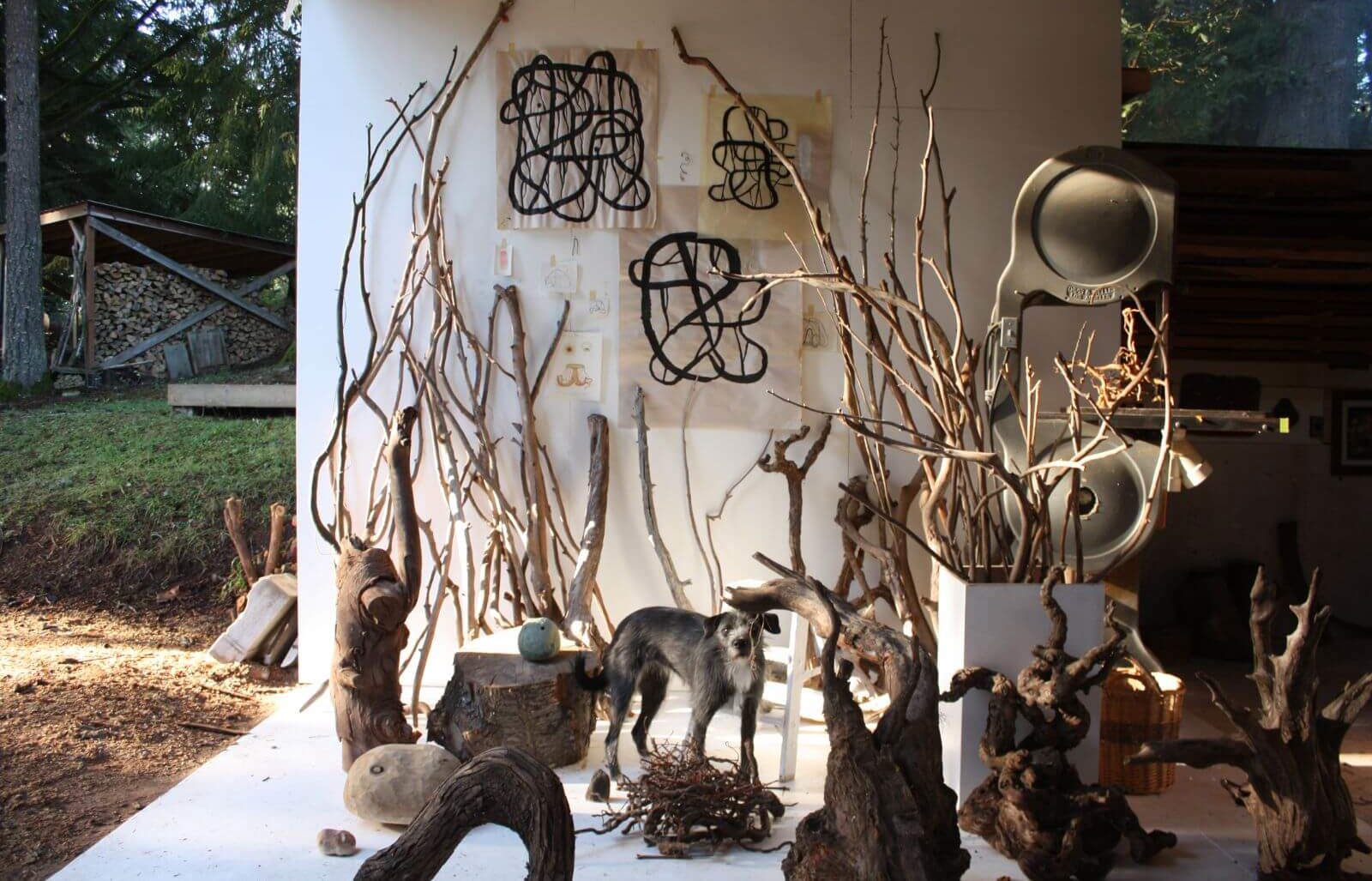
Julian Watts’s studio, 2022
COURTESY: Julian Watts & Sarah Myerscough Gallery
EC-M: What are your processes?
Julian Watts: My landlord built this house and shop, he was a woodworker. He lets me use his machines – chainsaws and grinders and a lot of hand tools, although there are no digital CNC techniques just yet. I like the tactile, hands on.
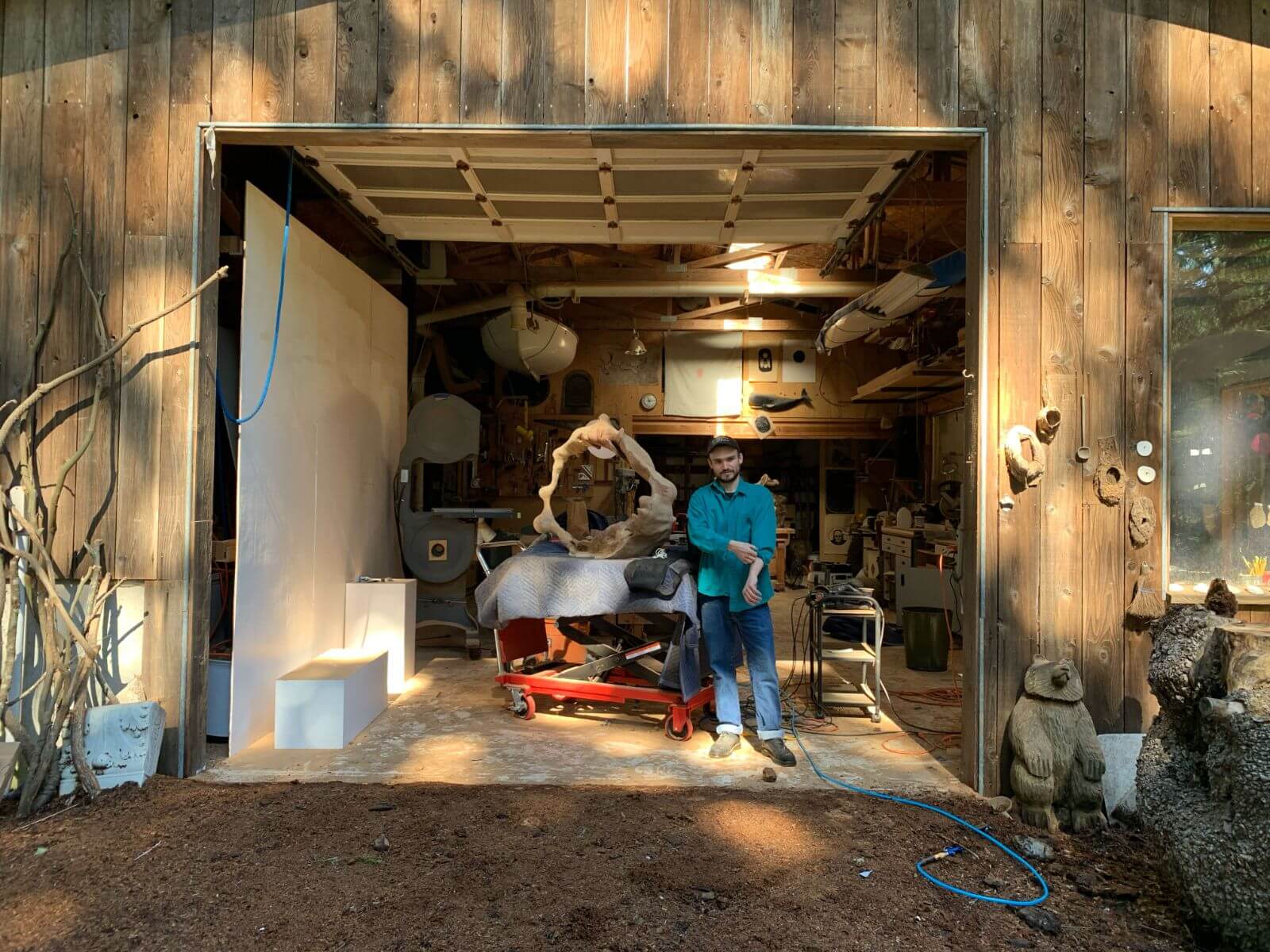
Julian Watts in his studio, 2022
COURTESY: Julian Watts & Sarah Myerscough Gallery
EC-M: America has this incredible tradition of wood, in the studio furniture movement, with George Nakashima, Wharton Esherick, Wendell Castle or the more sculptural work of Noguchi – have these offered models, or do you draw your inspiration from other sources?
Julian Watts: My inspiration doesn’t come from those places. In terms of American artists, one I kept coming back to in preparing this show was Cy Twombly, the looseness of the drawing. And the colours, the blushing. Otherwise, pure inspiration from nature.
EC-M: And yet there is the issue of the pink – and its connection to human flesh but also to culture?
Julian Watts: For me the colour is a way of jolting the viewer out of comfort. I have been emphasising truth to nature, but the way I am processing the material is to transform it just to the brink of recognisability.
So the sanding of a rough, rotten piece of wood is one step, the bleaching transforms it and the pink creates this intimacy and warmth that is at odds with the gnarly grain you see on the other side. It makes the viewer work a little more and there is this tension and playfulness to it.
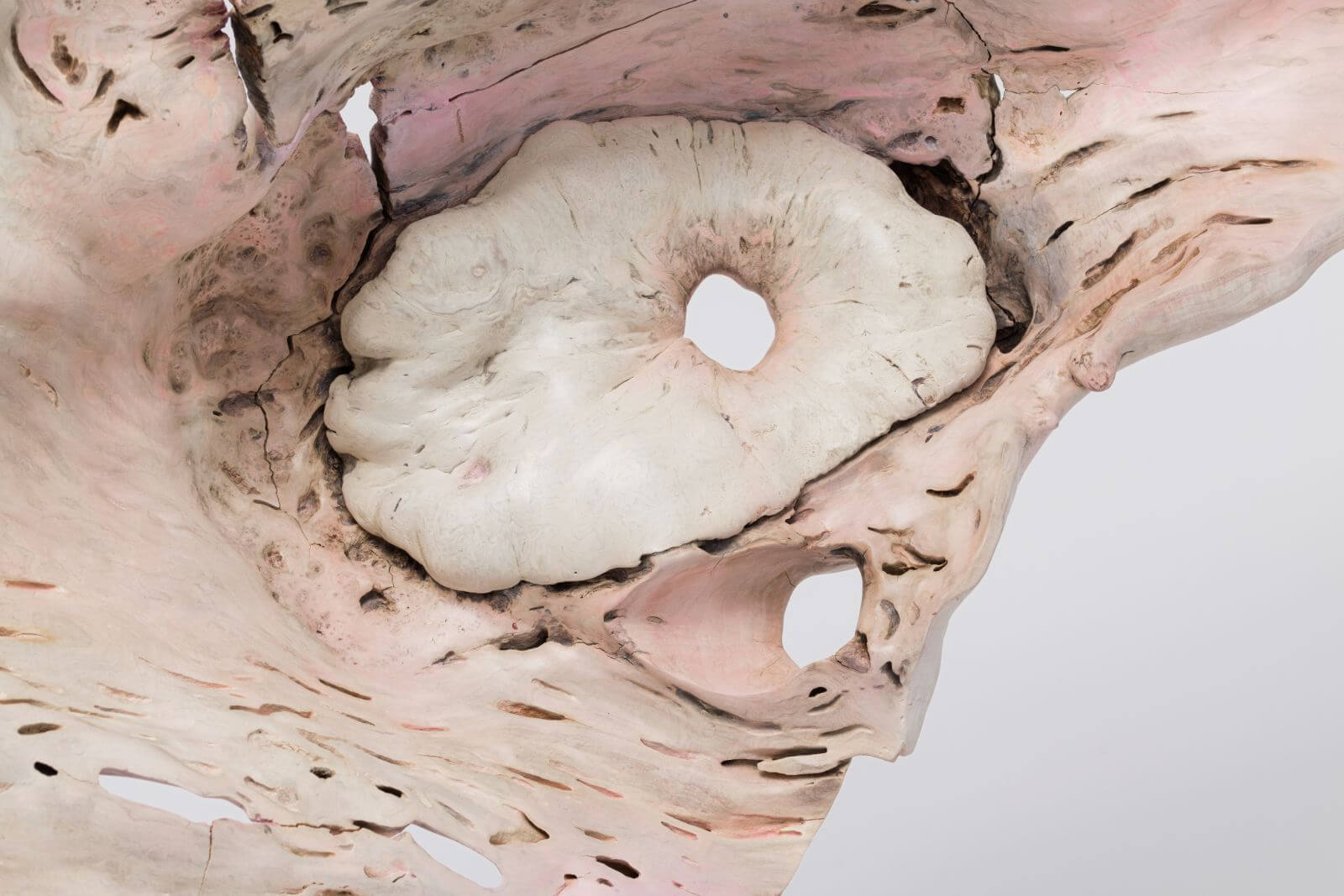
Julian Watts, ‘White Sculpture (triangles)’, (detail), 2022
COURTESY: Julian Watts & Sarah Myerscough Gallery
EC-M: So when did you start working in bronze?
Julian Watts: The bronze has come in the last year and a half. I am working on a big public art commission for a public plaza in Washington State. It has always been a dream of mine to take these little twigs and cast them. To transform these stick tangles into something that is permanent and has the weight of bronze felt like such a great juxtaposition, contrasting with the fluidity and ephemerality emphasised elsewhere in the show. Some of the sticks are ones that my dad, who was also a sculptor, used to collect. He passed away years ago and I inherited buckets of sticks. So this is a crazy memorial to nature, but also personal.
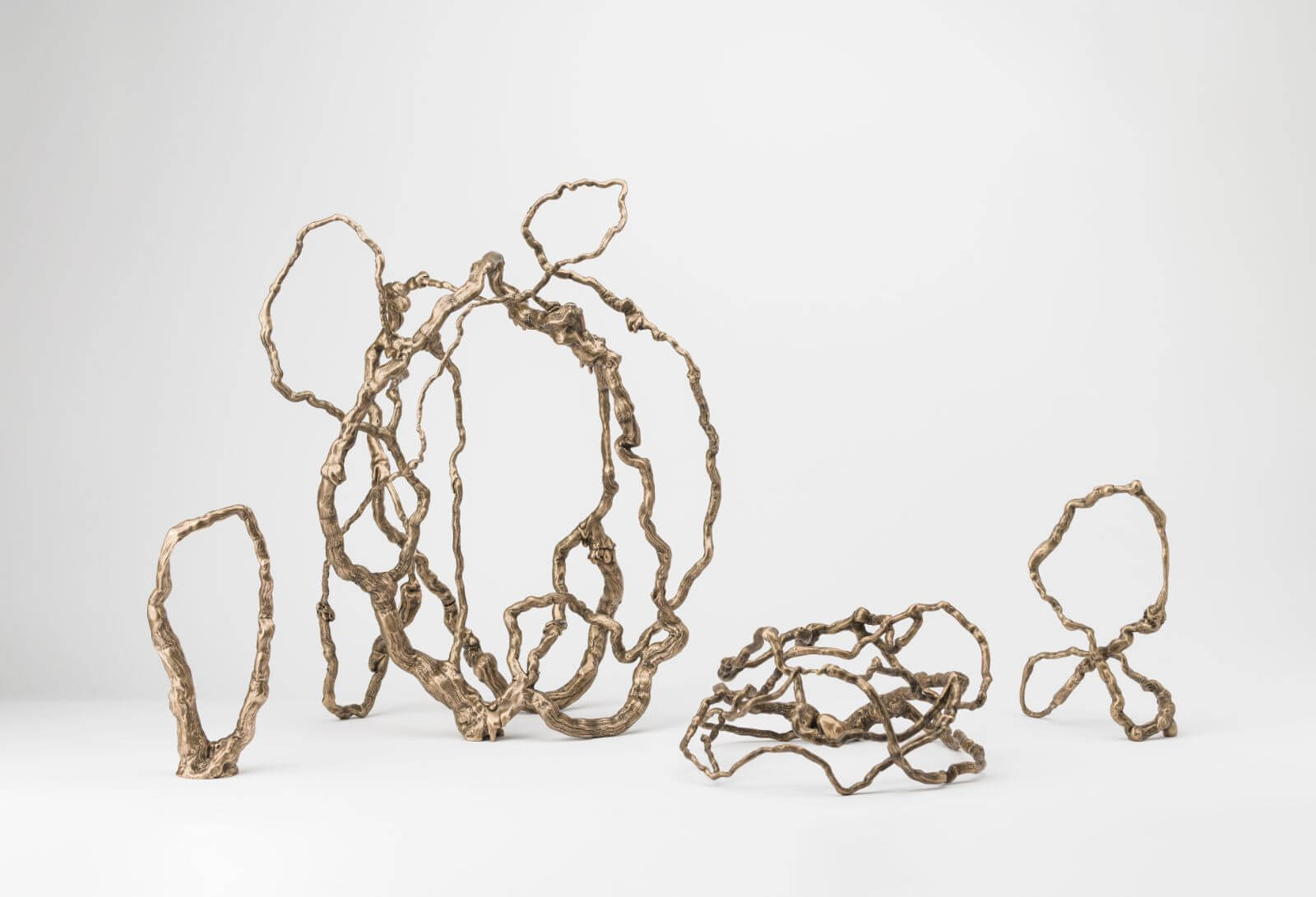
Julian Watts, ‘Tangles Large, Nest, Oval, Loops’, 2022
COURTESY: Julian Watts & Sarah Myerscough Gallery
EC-M: What about the blackened pieces?
Julian Watts: The black pieces undergo an oxidisation process, which brings out this rich, dark colour in the walnut. The compositions are inspired by the landscape near my home, some are more representational and some purely abstract. For me that is key – processing nature through the creative experience and how that mimics nature’s transformations.
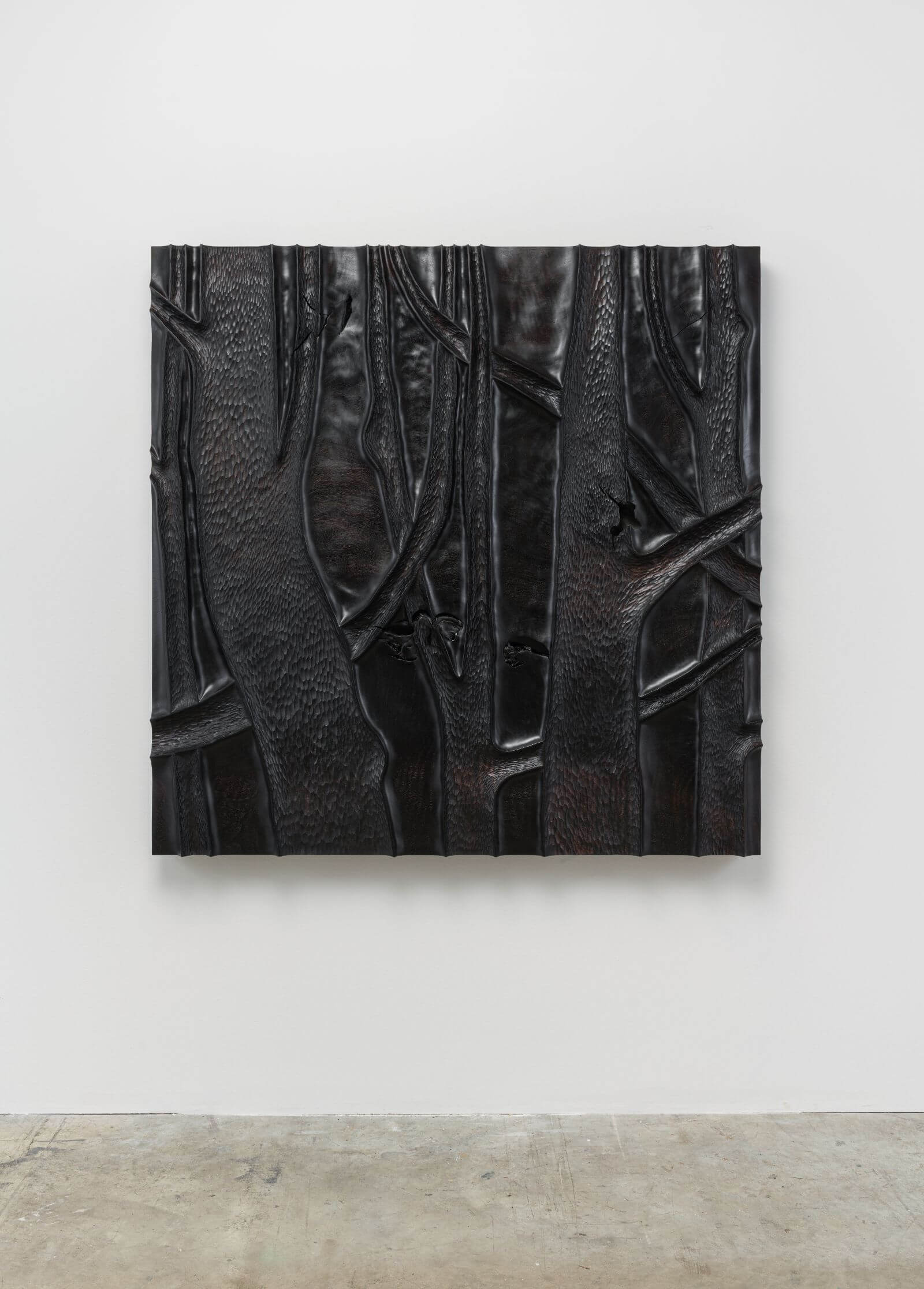
Julian Watts, ‘Black Painting’, 2022
COURTESY: Julian Watts & Sarah Myerscough Gallery
Julian Watts – Ash Swale at Sarah Myerscough Gallery, London.
